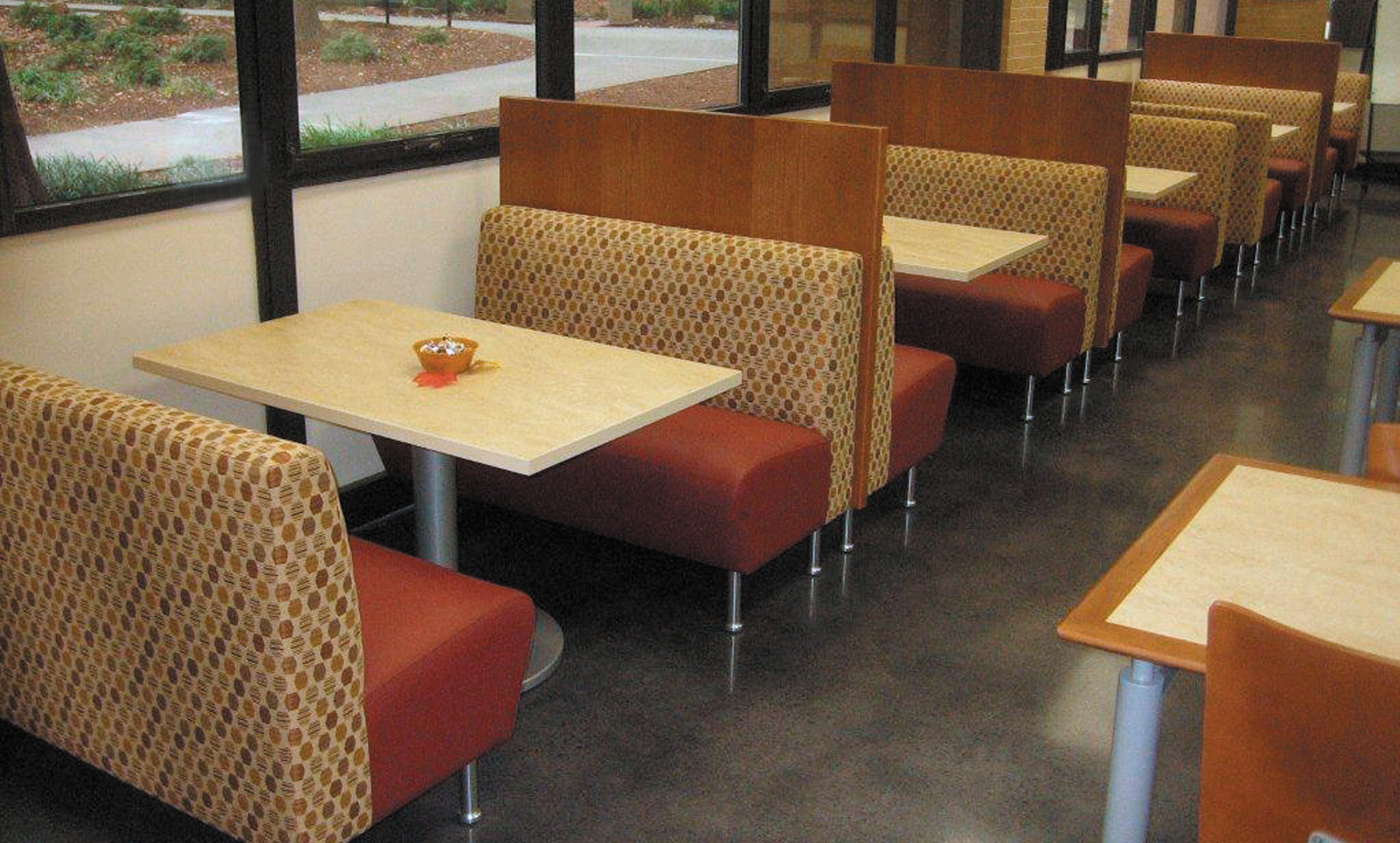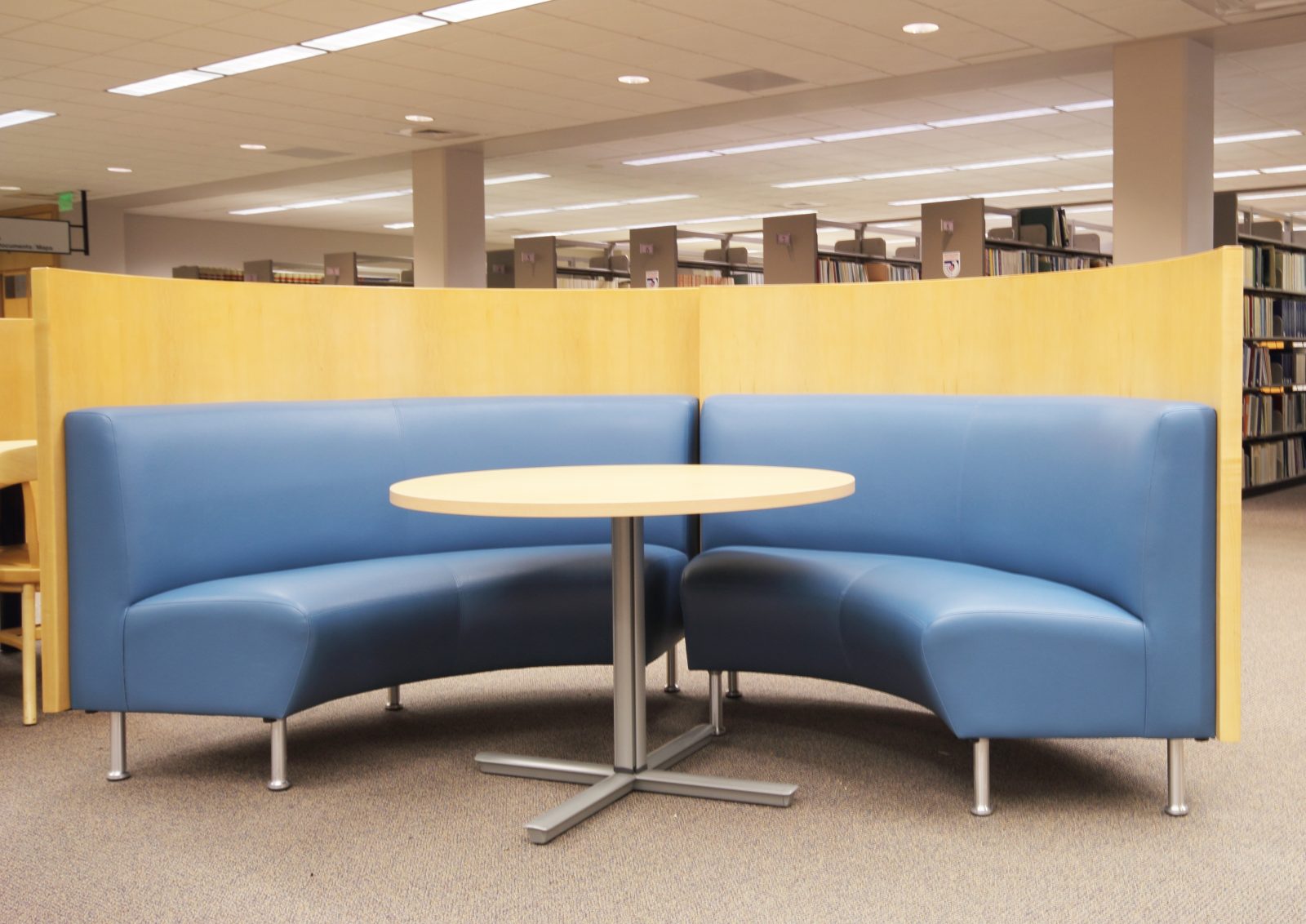
In the fourth & final installment of our Stacks Removal Series, we interview an expert in the design field, Director of Library Architecture at Dewberry, Denelle Wrightson.
During a time of tight budgets and limited staff, navigating the design process yourself is vital to the success of your project when your budget won’t allow you to hire an interior architect. Wrightson offers her advice for librarians and decision makers doubling as designers, detailing the importance of clear goals, metrics, and the confidence to take chances.
Starting from the Drawing Board
When Wrightson begins a project, she asks librarians to describe their specific goals for the space. Having a clear idea of the library’s goals helps Denelle and her team understand what would be considered a successful result: Do you want the “wow” factor? Is there a certain demographic you’re trying to engage? Do you want to provide a specific service to patrons? This goal becomes a benchmark for the entire project.
Midland Centennial Library in Midland, Texas is a library Wrightson recalls had a clear end goal in mind. They wanted to become “…A lynchpin, corner stone of the community, a destination,” according to Midland Director of Libraries John Trischitti.
Wrightson suggests taking a step outside of your space, and observing it from an outside perspective. Having a close attachment to a space can sometimes hinder innovation, so she suggests gaining as many perspectives on potential designs as possible.
Metrics, Metrics, Metrics…
When starting your project, Wrightson says community and staff support are vital, and their involvement will improve the project as a whole. This diverse support will also help librarians engage and measure their metrics, which are also important for the resulting design.
Wrightson suggests comparing your local library metrics to state and national libraries to understand larger trends across the country. Some of these key metrics include square footage, staffing, programming, and collections turnover rate. Wrightson finds the usefulness of metrics one of the most underestimated components of library projects.

Kennesaw State University
Understanding and presenting library usage metrics was also key to gaining continued support from the community, as discussed in a previous blog with Dr. David Evans, Dean of Libraries at Kennesaw State University, and Annette Armstrong, Library Director at Green Hills Public Library. Both Dr. Evans and Armstrong utilized their library’s metrics to influence their renovation designs to create more technologies space and remove under-circulated material, for example.
Plenty of Questions
Wrightson receives plenty of questions from librarians, but some concerns are more frequent than others. One concern she encounters is librarian and staff difficulty understanding space plans and drawings. She says the key to helping others understand your library redesign plans is to use objects and measurements in the existing space.
Another concern librarians often have is staff space. Wrightson says librarians tend to cut too much staff space in favor of public space, which becomes an issue when the staff grows. By ensuring there is enough break space and back room storage in the design, you will avoid headaches in the future when your staff expands.
On the flip side, there’s also major concern about public meeting space: size, type, quantity of rooms, etc. Wrightson says a good rule of thumb is to envision the space with an increased number of patrons, since attendance tends to increase after a library renovation. By preparing for more visitors, you save the time of adding on after the finished project.
Leaving Room to Grow!
Adaptability is a key element of any library design. To ensure adaptability, Wrightson suggests working with mobile elements in the center of the space that can be moved according to the specific space needs.
Mobile walls and furniture can be great additions to your space, similar to the Teen Place at the Schaumburg Township District Library. By utilizing mobile elements, patrons can create privacy as it becomes necessary. The same can be applied to maker spaces, ensuring that they’re adaptable and not overly specialized prevents a surplus of single-use spaces.
Trends to Avoid
There are plenty of trends in library design, especially in technology. One of the main things Wrightson advises against is DVD dispensing machines. Many view their entertainment on streaming devices, and just as VHS has become virtually obsolete, what will happen if you purchase an expensive DVD dispensing machine and DVDs are no longer manufactured?
This also applies to other equipment, such as self checkout stations and monitors. If you’re considering placing a niche in a wall for a specific piece of equipment, Wrightson says to ensure that the space can be used for other machines or items in the future.
Planning for the Future!
Wrightson agrees that technology is rapidly changing the design of contemporary library interiors, but people are in danger of becoming over-programmed. She says that because of this over-programming, there is a social need that must be fulfilled, whether it be in a bookstore, coffee shop, or a library. She says the atmosphere becomes important for this reason.
In a similar manner, Teri Switzer and her staff at University of Colorado at Colorado Springs Kraemer Family Library chose to increase student study space by removing underutilized journal stacks. To alleviate study room congestion, the space where the stacks once stood evolved into prime real estate for group collaboration, socializing, and library programming.
 UCCS Kraemer Family Library
UCCS Kraemer Family Library
Libraries are a 3rd place destination, and this will only become more relevant in the future. Libraries also take on a strong role in early literacy, parents and children coming together to learn and bond within these spaces. By fostering a social atmosphere, libraries will continue to thrive.
One Last Thing…
There are 3 things Wrightson hopes librarians will remember when taking on the task of designers:
- Have Fun
- Be Flexible and Open to New Ideas
- Dream: Take Risks and Push the Envelope
Wrightson hopes that by keeping a clear goal in mind and staying flexible, librarians will accomplish their design tasks with confidence. As well, involving your community is vital in all aspects, from the drawing board to the ribbon cutting. Without them, after all, libraries wouldn’t exist. Even though it’s a huge responsibility to take on, the design process and the end result will surely be worth it.

Will you be in Chicago for ALA Midwinter 2015?
AGATI will see you there.
Visit us at booth #2826
